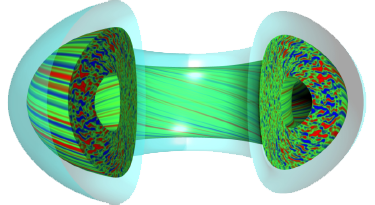Speaker
Description
The locked mode amplitude is one of the most commonly used signals for disruption prediction in tokamaks. On the JET baseline scenario, our results suggest that the simple application of a threshold on that signal yields a disruption predictor with more than 95% accuracy. It is well-known that mode locking is one of the main disruption causes at JET; however, it is often too late to avoid a disruption by the time it is detected. In this work, we apply deep learning on MHD spectrograms to predict the locked mode itself and to identify the MHD behaviour that typically precedes mode locking. Specifically, we apply a Convolutional Neural Network (CNN) on a sliding window over the MHD spectrogram to predict whether the locked mode amplitude will exceed a given threshold. In addition, we use Class Activation Mapping (CAM) to highlight the regions in the spectrogram that the model considers to be the most important to arrive at a certain prediction. The results suggest that the interruption of the n=1 mode activity followed by the resurgence of a mode at the q=2 surface are strong indicators that mode locking is about to occur, which is consistent with the literature. Since we are predicting the locked mode, and not the disruption itself, the model is unable to predict all types of disruptions; however, for those that have a locked mode signature, the model can predict them well before the rise in the locked mode amplitude. The use of explainability techniques also suggests that the model can be useful, as an interpretable machine learning tool, to support the analysis of MHD activity.
| Country or International Organisation | Portugal |
|---|---|
| Affiliation | IPFN / IST, University of Lisbon |

